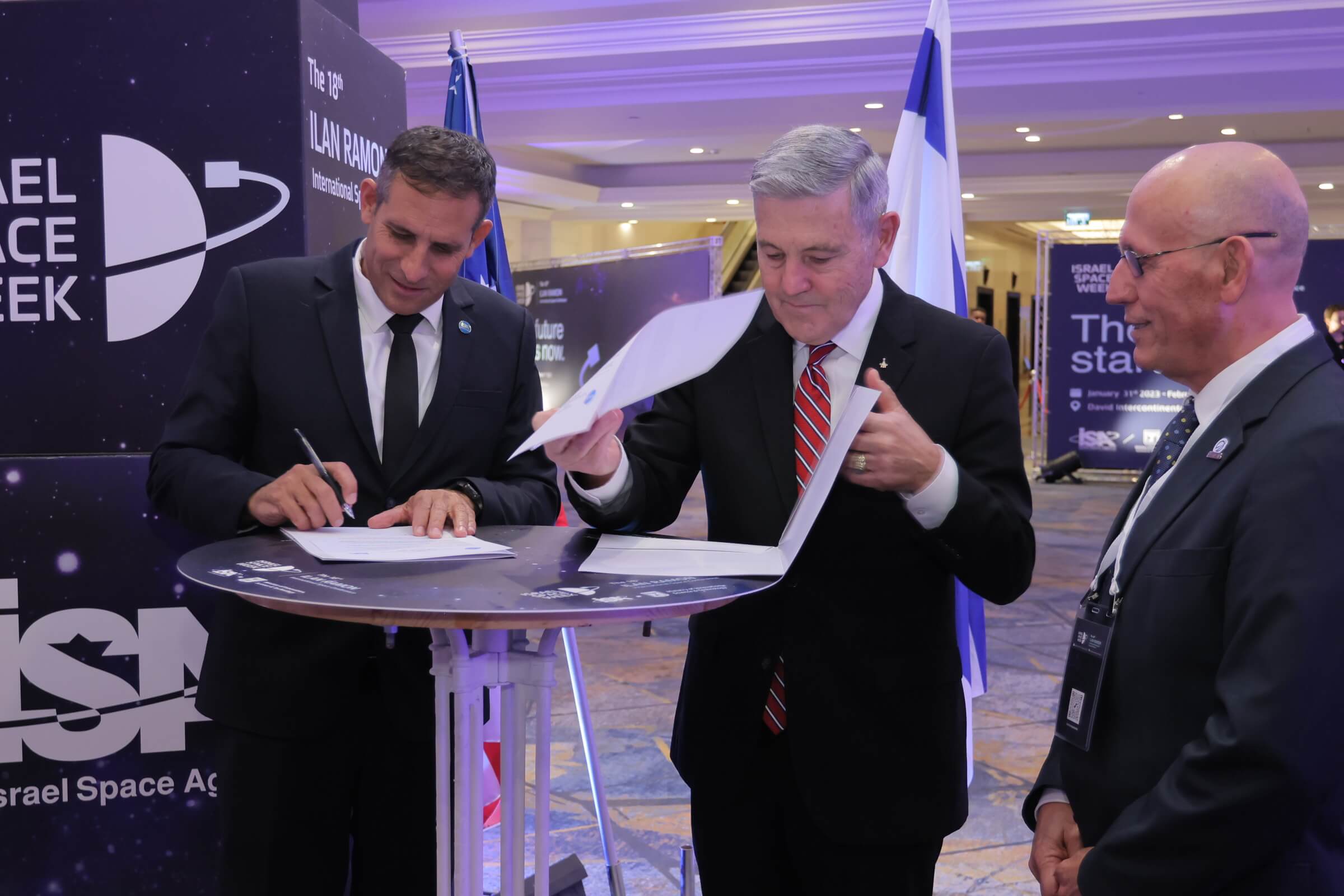As part of the joint statement of intent, NASA is expected to contribute a spectrometer for linear energy transfer, support for a communication network and coordination with NASA's Lunar Reconnaissance Orbiter. In the future, NASA is expected to participate in the selection of landing sites and in the membership of the scientific team

The Israel Space Agency in the Ministry of Innovation, Science and Technology signed a joint statement of intent (SOI) with NASA for cooperation in SpaceIL's Genesis 2 mission to the moon at the 18th Ilan Ramon International Space Conference held at the David Intercontinental Hotel in Tel Aviv.
Robert (Bob) Cavanagh, NASA Deputy Administrator, andUri Oron, The director of the Israel Space Agency, who represented NASA and the Israel Space Agency, noted the long-standing relationship between the two space agencies, which includes education and research in earth and space sciences.
As part of the joint statement of intent, NASA is expected to contribute a spectrometer for linear energy transfer, support for a communication network and coordination with NASA's Lunar Reconnaissance Orbiter. In the future, NASA is expected to participate in the selection of landing sites and in the membership of the scientific team. The Israeli Space Agency, in coordination with the SpaceIL association, is expected to participate in the Genesis 2 mission to the moon and operate in accordance with the principles of open science. The joint declaration of intentions of Bereshit 2 is built on the success of the first collaboration in 2019, in the "Bereshit 1" mission of SpaceIL, the first private spacecraft to fly to the moon. The spacecraft had a huge educational impact on more than 2 million students worldwide, inspiring them to study science, technology, engineering and mathematics (STEM). The Genesis 2 launch by SpaceIL is scheduled to take place in 2025.
MK Ofir Akunis, Minister of Innovation, Science and Technology: "The Genesis project is the pride of Israel's groundbreaking science and technology. The cooperation and the new agreement with NASA is another proof of this and I welcome its signing. It is also another testimony to the excellent relations between Israel and the USA and to the deepening of cooperation in matters of science and technology."
Mr. Robert D. Cavanagh, NASA Deputy Administrator: "The moon is a fascinating target for research and I look forward to the scientific discoveries that will come from the Genesis 2 mission. Our partnership in the moon mission and Israel's commitment to the Artemis agreements allow us to explore the moon together."
Shimon Sharid, CEO of the association SpaceIL: "We are happy and excited about the cooperation agreement between NASA and the Israeli Space Agency regarding the Genesis 2 mission. We are grateful for the continued support of the SpaceIL association and hope that together, through the new challenging mission to the moon, we can both promote space exploration and allow millions of children to take part and be excited by the opportunities that space creates."

2 תגובות
Oh, the cameras are sensitive to the sun's radiation, and what about the accelerometers??, don't forget.... good luck!!!!!
The most important thing!!, do not do a RESET to the main computer of Genesis during the landing on the moon